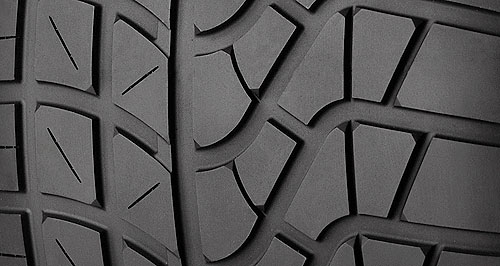News - General News - TechnologyPirelli thinks small for high-tech tyresFull circle: Pirelli says Australia will benefit form European tyre labeling legislation that will help consumers rank their performance via easy-to-read labels. Better tyre technology on Australia’s horizon, says Pirelli17 Mar 2014 PIRELLI has revealed it is using microscopic technology to produce tyres that perform better in wet weather, use less fuel and make less noise – andAustralia will be among the first countries to get them. The secret nanotechnology-derived compound is being developed in conjunction with some of Pirelli’s key material suppliers in a project that will give the Italian tyre giant exclusive rights to the technology. Significant structural changes are also being designed for the application of the new material, which will feature in a brand new product due to be released this year. Pirelli’s top engineers and chemists are working alongside engineers from synthetic rubber, silica and carbon-black manufacturers in China to produce the product, which Pirelli claims will give it a significant advantage over its competitors. The tyres will have the greatest advantage in Europe where legislation requires manufacturers to label their products with their ranking for wet weather performance, rolling-resistance and noise emissions. However, their early entry here means Australian motorists will be among the first to benefit from the performance improvements. Pirelli Asia Pacific chief executive Carlo Costa Ardissone said he welcomed the legislation, which gave customers information other than just price on which to base a purchase decision, and encouraged them to pick better quality options. “We are already label-compliant for Asia-Pacific even though the legislation is not there,” Mr Ardissone said. “It’s very confidential but this year we are going to come out with a new product … (that) we are developing in China.” He said the tyre-maker would not make products that did not comply with the European legislation. “For us it’s much more convenient to produce all the same tyres rather than having two different production lines,” he said. “The new compounds that we develop are going to be applied to all the tyres.” Australian and New Zealand governments are considering a similar labeling system, although with the possible exemption here of noise ratings because of our coarse-chip roads that generate roar. If it becomes mandatory in Australia, all new tyres will have to display a sticker that grades their performance in an easy-to-understand chart similar to the labels describing the water and energy use of white-goods. As well as the invisible advances in chemical compounds, Pirelli is working on future products with a lower rolling resistance and more obvious design changes. Pirelli Asia-Pacific motorsport manager Simon Pool said he predicted that mainstream tyres would change from wide tread patterns to skinny sections on large-diameter wheels over the next decade, in an effort to minimise fuel-sapping drag and noise. “Audi are looking at tyre widths of around 165mm rear and 145mm front, but everyone is doing it, not just Audi,” Mr Pool said. “It’s a trade-off between rolling resistance and contact patch – the higher the pressure the less the resistance but the contact patch shrinks. “The process will be gradual but will accelerate towards the latter stages taking maybe eight to 10 years.” Mr Pool said change was already happening, with the average diameter of a wheel increasing gradually over many years.  Read more |
Click to shareGeneral News articlesResearch General News Motor industry news |
















Facebook Twitter Instagram